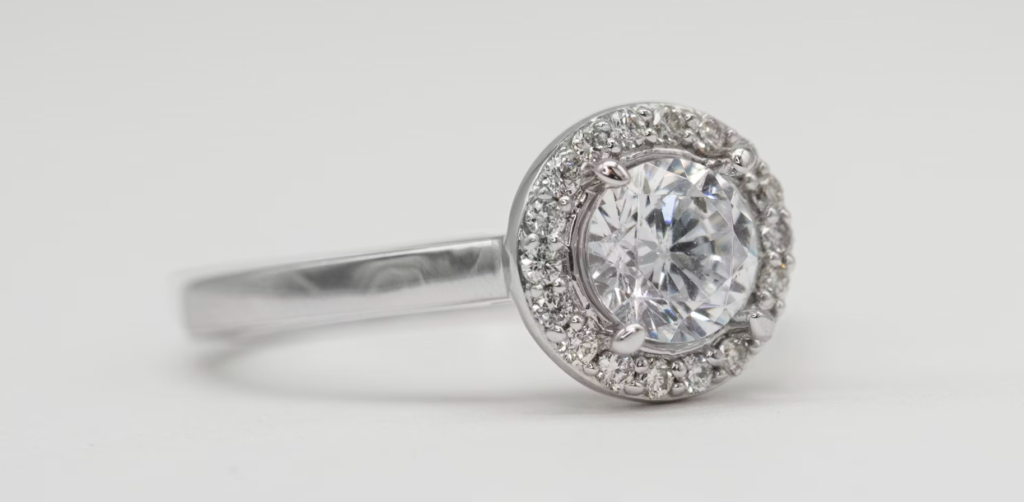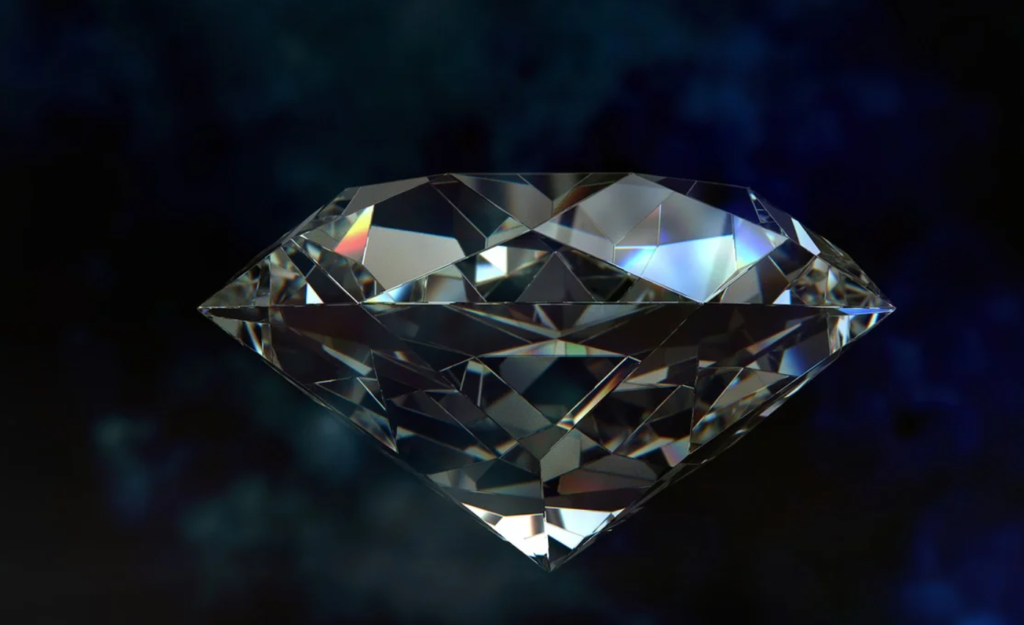Interesting Facts About Diamond
Fascinating Facts About Diamonds

Diamonds have captivated human beings for centuries with their brilliance, durability, and rarity. Here are some intriguing facts about these extraordinary gemstones:
The term “diamond” originates from the Greek “adamas,” meaning invincible. Ancient cultures believed diamonds provided strength and healing.
1. Hardness and Durability
- Diamonds are the hardest natural material known to man, scoring a 10 on the Mohs scale of mineral hardness. This makes them incredibly durable and ideal for use in cutting and grinding tools.
2. Ancient Origins
- Most natural diamonds are between 1 billion and 3.5 billion years old. They were formed deep within the Earth’s mantle under extreme heat and pressure.
3. Carbon Composition
- Diamonds are composed entirely of carbon atoms arranged in a crystal lattice structure. This unique arrangement is what gives diamonds their exceptional hardness and optical properties.
4. Kimberlite Pipes
- Diamonds are brought to the Earth’s surface through volcanic eruptions via kimberlite and lamproite pipes. These pipes originate deep within the mantle and carry diamonds along with other mantle materials to the surface.
5. Synthetic Diamonds
- Diamonds can also be created artificially. High-pressure, high-temperature (HPHT) and chemical vapor deposition (CVD) methods are used to produce synthetic diamonds, which are often used in industrial applications.
6. Allotropes of Carbon
- Diamonds and graphite are both allotropes of carbon, meaning they are made from the same element but have different structures. While diamonds are the hardest natural material, graphite is one of the softest.
7. Color Variations

- While most diamonds are colorless, they can also come in a variety of colors including blue, yellow, green, and pink. These colors are usually caused by impurities or structural defects within the diamond.
8. Industrial Use
- About 80% of mined diamonds are used for industrial purposes rather than jewelry. These industrial diamonds are used in cutting, grinding, drilling, and polishing tools.
9. Symbol of Eternity
- Diamonds are often associated with love and eternity. This symbolism dates back to ancient times and has been popularized in modern culture through engagement rings and other jewelry.
10. The Largest Diamond
- The Cullinan Diamond is the largest gem-quality diamond ever found, weighing 3,106 carats. It was discovered in South Africa in 1905 and was eventually cut into several major gemstones, including the Great Star of Africa, which is part of the British Crown Jewels.
11. Thermal Conductivity
- Diamonds have the highest thermal conductivity of any natural material, which makes them highly effective at dissipating heat. This property is particularly valuable in electronic applications.
12. Clarity and Inclusions
- The clarity of a diamond is determined by the presence of internal or external imperfections, known as inclusions and blemishes. The fewer the inclusions, the higher the clarity grade and value of the diamond.
13. Famous Diamonds
- Some of the most famous diamonds include the Hope Diamond, known for its rare blue color and storied history, and the Koh-i-Noor, which has been part of the British Crown Jewels for over a century.
Diamonds are not only symbols of luxury and beauty but also remarkable natural wonders with a rich history and diverse applications. Their unique properties continue to make them one of the most fascinating and valuable substances on Earth.
.
Additional Information:
- Formation Process: The high-pressure, high-temperature conditions required for diamond formation occur at depths of 140 to 190 kilometers (87 to 118 miles) within the Earth’s mantle. Here, carbon atoms crystallize into diamonds over millions of years.
- Journey to the Surface: Volcanic eruptions, specifically through kimberlite and lamproite pipes, transport diamonds from the deep mantle to the Earth’s surface. This rapid ascent is crucial to preserving the diamond structure.
- Mining and Discovery: Diamonds can be found in both primary deposits, within volcanic pipes, and secondary deposits, in riverbeds and ocean floors where erosion has carried them over time.
- Unique Properties: Diamonds are the hardest natural material on Earth, rating a 10 on the Mohs scale of hardness. This makes them highly resistant to scratching and exceptionally durable.
- Color and Clarity: While most diamonds are colorless, they can also exhibit a range of colors due to impurities or structural anomalies. The clarity of a diamond is determined by the presence of inclusions and blemishes, affecting its overall appearance and value.
- Industrial Applications: Beyond their beauty, diamonds have numerous industrial uses. Their hardness makes them ideal for cutting, grinding, and drilling tools, while their thermal conductivity is valuable in electronic applications.
- Symbolism and Cultural Significance: Diamonds have long been symbols of love, eternity, and strength. They are often used in engagement rings and other jewelry to signify enduring commitment and timeless beauty.
- Famous Diamonds: Some of the world’s most famous diamonds, like the Hope Diamond and the Cullinan Diamond, have storied histories and are known for their exceptional size, color, and clarity. These gemstones often hold significant cultural and historical value.
- Synthetic Diamonds: In addition to natural diamonds, synthetic diamonds can be created using high-pressure, high-temperature (HPHT) or chemical vapor deposition (CVD) methods. These diamonds are used in various industrial and technological applications.
Diamonds, with their extraordinary origins and unmatched properties, continue to captivate and inspire. Each diamond’s journey from deep within the Earth to a cherished piece of jewelry is a testament to the incredible forces of nature and the timeless allure of these precious gems.

